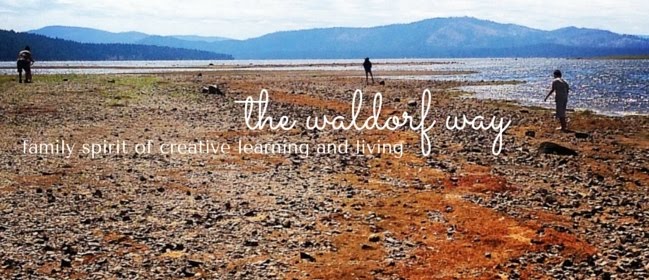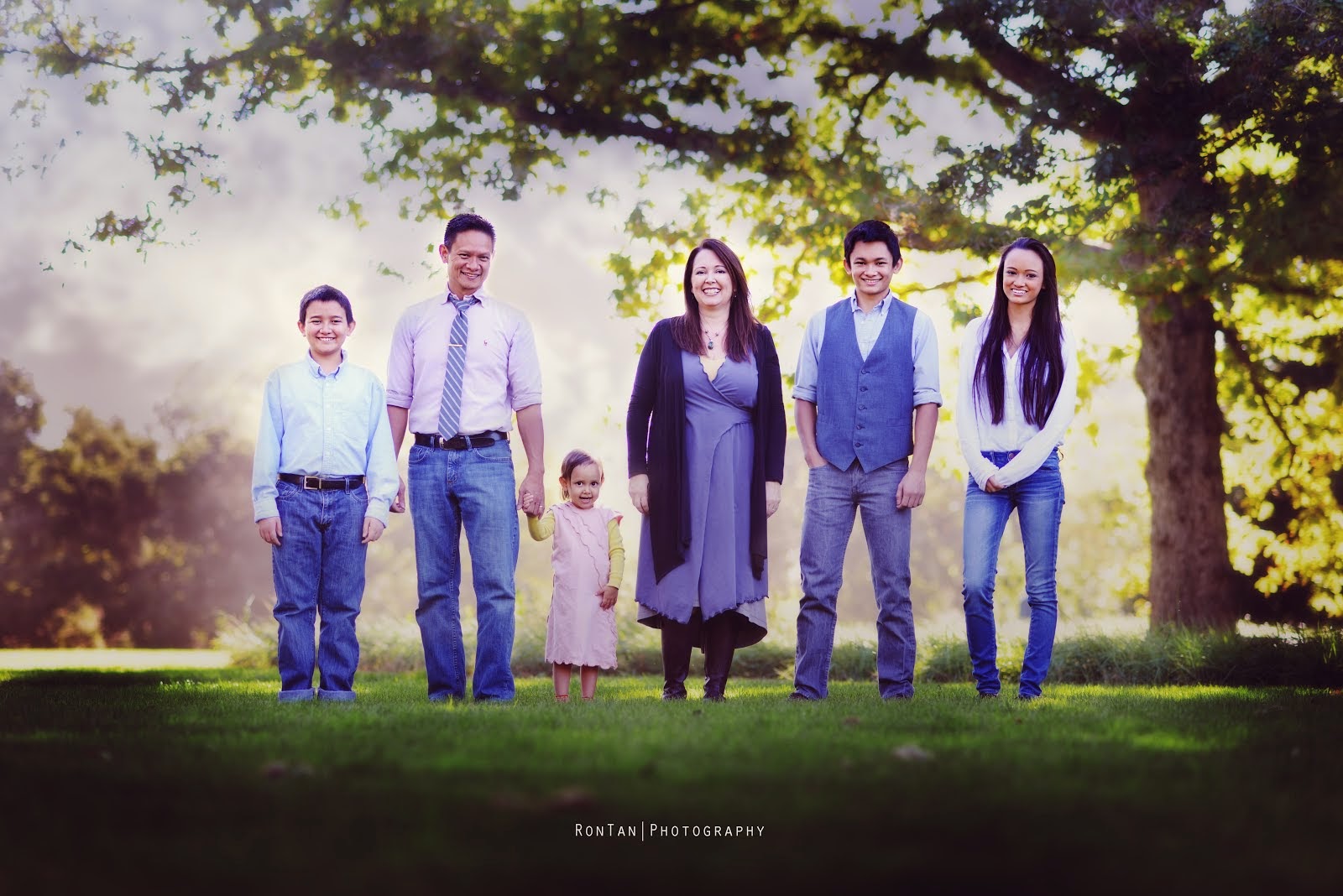Our instructor Ted Mahle can paint with his eyes closed. He has taught numerous students around the world this method of painting. Watercolor paper is soaked in water for about ten minutes, then is placed on a smooth board, the excess water is sponged off, and Stockmar paints are applied with a size 8, 10, or 12 Filbert brush. The brush is a hog's hair brush that is broad and with a tapered tip. Here in my Day One painting, we started with the three primary colors, blue, red, and yellow -- just masses placed on the page, then the colors are blended to form the secondary colors, purple, orange, and green. The middle is created by first pulling the paint off the paper by adding more water with the brush to lift the pigment, then a dry brush to wipe the paint off. Then we brought a bit of the color back, aiming for what Ted describes as a peach blossom color, signifying the soul. This technique relies on the ability to relinquish some level of control over the colors and masses, letting go, releasing the spirit into the paint.

On Day Two, we used primarily the color blue, and a bit of violet. The goal was to try and let the masses forming on the paper to guide the image, yet not be confined by it, to allow the developing shapes and movements define the space as water, or rolling hills.

This next one is my Day Three painting. I want to point out that Ted does not tell us what the image will or ought to be. By applying the paints in broad gestures first (he demonstrates on his paper the placement of the masses), each one of us will see something different to work with on the page. I felt I did not control the application too much, and I had better use of the techniques. I was happy with the way this one turned out - especially the modern house that emerged, and the bridge that I decided to add as a final thought.

Day Four, the final painting day of the week, I created this wonderful mythological scene. Ted was frantically having us apply the background colors, and we did not know where it was going to go. Apparently, the landscape was not as important as the subjects that were to later emerge. Even though initially I thought the scene would be disjointed, I was pleased with the outcome.

When we paint with our students, the time we spend, and the subject matter will be grade-appropriate. Ted says we do not have to be great artists as teachers, but we must demonstrate that we care to teach them with joyful hearts.



5 comments:
Your paintings are amazing...beautiful, spiritual and much more....
Wow! Just - WOW!!! These are such beautiful examples of wet-on-wet painting. You really have a gift. I can't wait to see what you will be doing in week two!
:)
Hi there,
just loving your blog. incredible!
Well, I am homeschooling my two children (3 and 7) here in Europe, following as closely as I can the Waldorf ideas I have picked up from my online curriculum and web browsing.
I love these paintings, they are stunning, you are fortunate to have Ted as your teacher.
I have some questions to ask about the technique if I may:
Do you paint the background first, and then wait for it to dry and then apply the second layer of figures and detail? I have had some success with the first layer only but do not know how to continue to produce a finished painting. My girls get very frustrated with the first layer of paint, it seems to be very wet and the colour glides off the paper and will not settle. We have tried several times to produce some art work in this method, but have given up in frustration.
I thought that I would do some experiments by myself first, before I go ahead formally with my eldest who will be starting first grade in September, can you reccommend a techniques book I may be able to buy to help me with the whole process of wet on wet?
I myself trained in art but have never done this type of work before! but I understand the process of letting the colour and forms come of their own accord as one enters into the creative process.
thank you so much,
looking forward to reading about your continued journey in the waldorf way,
Lune.
Hi Lune,
I will have to research on a useful book for the wet-method painting. I have to say, without the instrucotr actually showing the process, I think learning it from a book may just frustrate you more. What would be cool is a video tutorial! I'll have to check YouTube...
From what I learned in the class, after the first "layer" of masses of color is applied, then the next technique I found useful is to pull the paint pigment off the paper, so you are creating a negative space. This is done by wetting your brush and applying it to the area you want (for instance, in my paintings, those areas became water), then dry your brush and lift the pigment and water off the page. You should have a space that now has little to no pigment. Next, in that space, you can apply a different pigment with less water to give it color (I did this with my horse in the creation painting.) Give it a go, and let me know if it works!
I'm enjoying your blog very much. Rauld Russell's book “How to Do Wet-on-Wet Watercolor Painting and Teach It To Children” is a wonderful resource. It's being reprinted by Marsha Johnson, who can be contacted through her yahoo group called waldorfhomeeducators.
Post a Comment